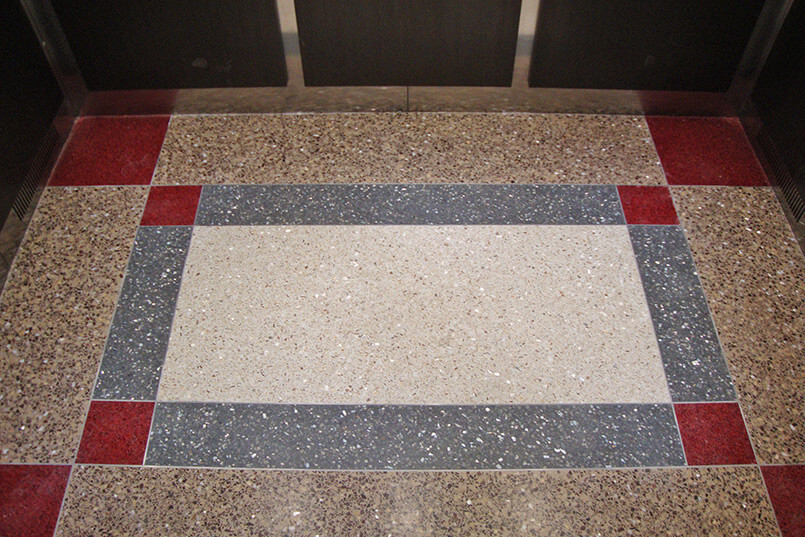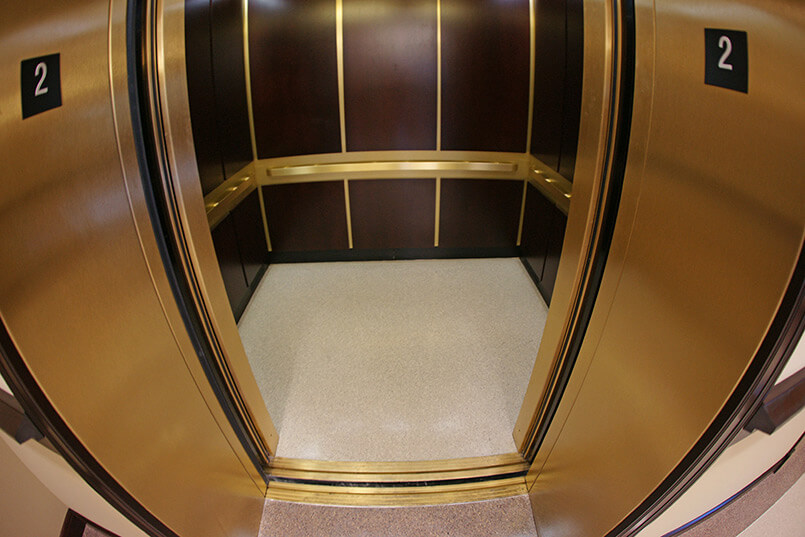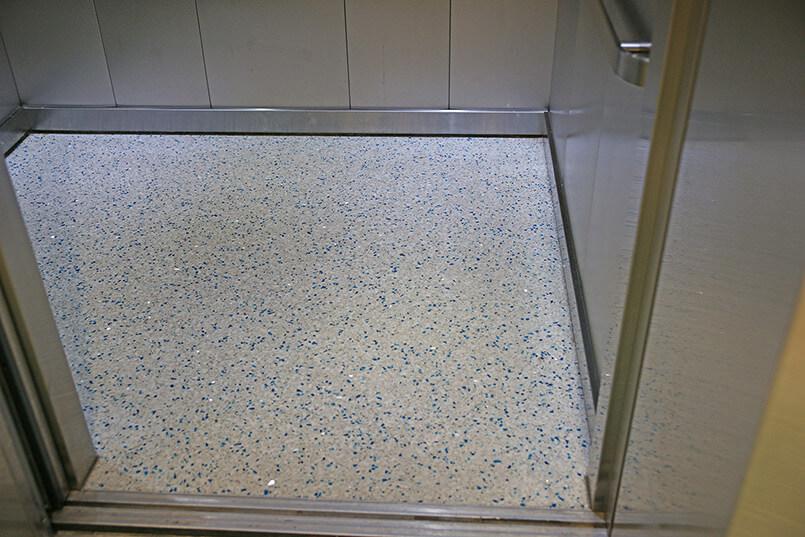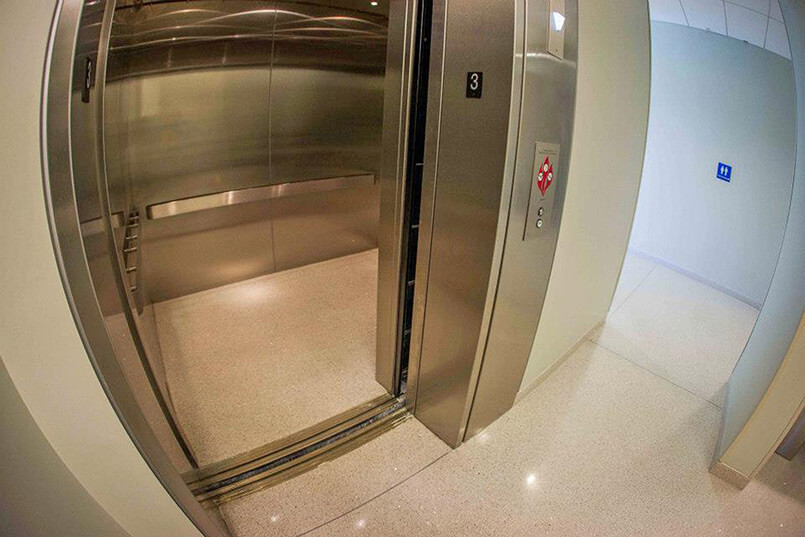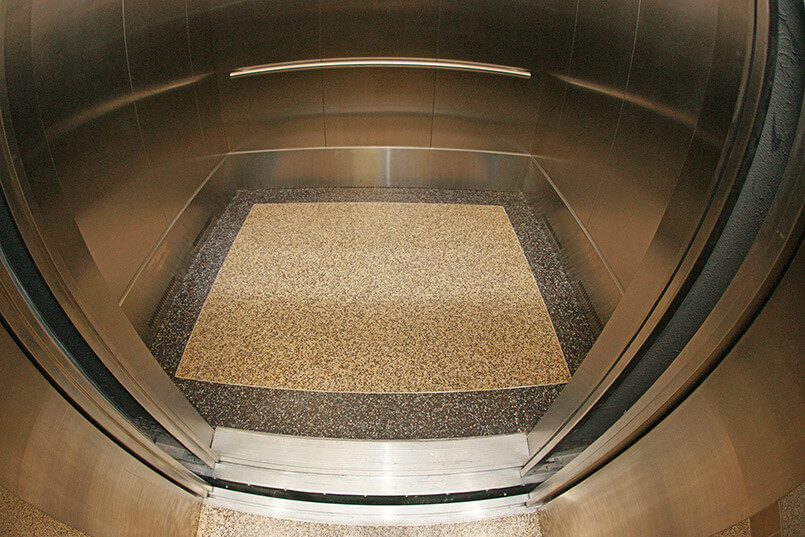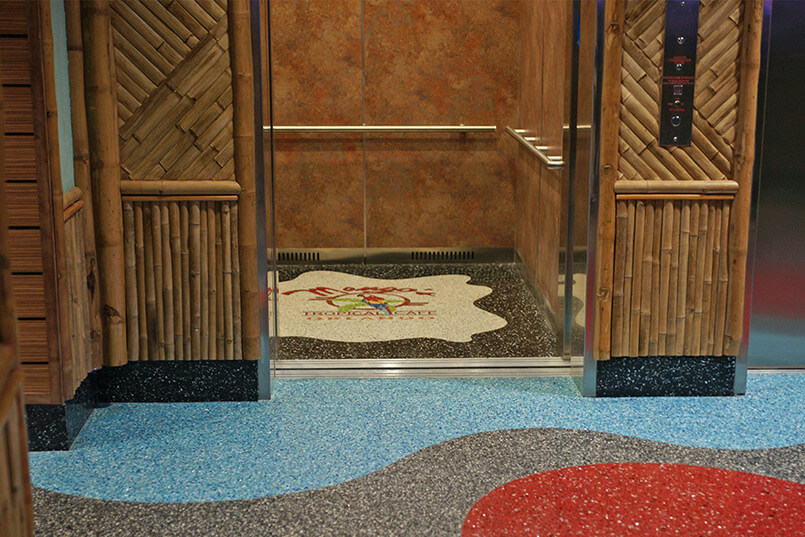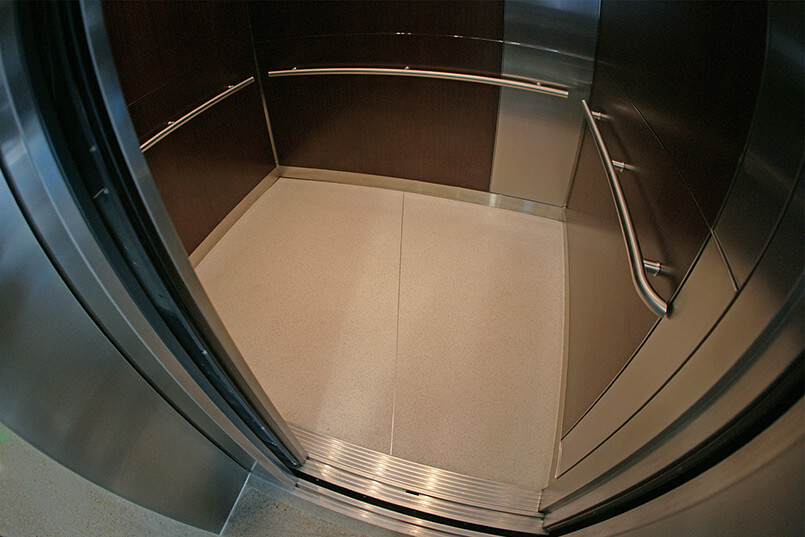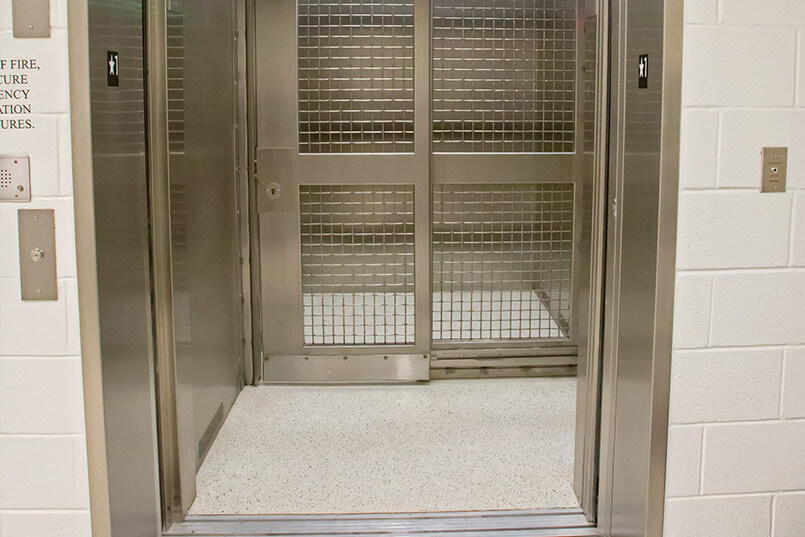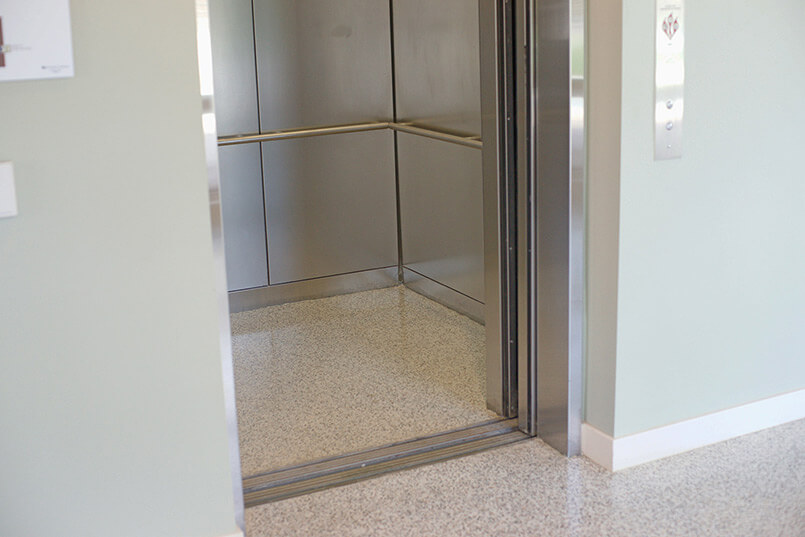10 Nov Installing Terrazzo in Elevator Cabs
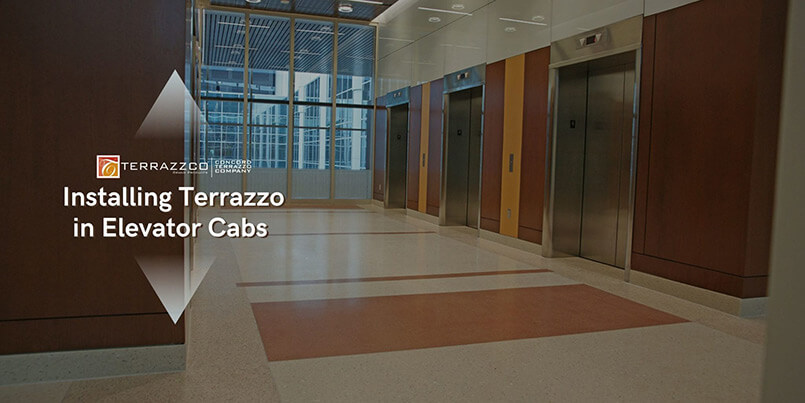
Installing Terrazzo in Elevator Cabs
One of the best ways to enhance the performance and aesthetics within an elevator space is to select epoxy terrazzo flooring. Today we’ll help you specify terrazzo flooring in elevator cabs.
Epoxy terrazzo is a flooring system that can be installed in any indoor area. From high-traffic areas in airports and schools to small spaces, epoxy terrazzo offers a decorative and durable flooring system that’s easy to maintain.
Which Terrazzo System is Best for Elevator Cabs?
Flooring isn’t usually something one considers when assembling an elevator, but when considering elevator performance and maintenance, a material that is lightweight and durable will provide a long-term solution. Terrazzo happens to be a great application for elevator cabs.
When considering applying terrazzo inside the elevator cabs, it is important to understand which system is recommended. A designer should select an epoxy terrazzo system for elevator cabs for its physical properties. This system is thin at 3/8″ and high in flexural, compressive, and tensile strength.
A cement terrazzo system is not recommended for elevator cabs. A thicker and heavier system, cement terrazzo does not support the loading and movement of elevator cabs.
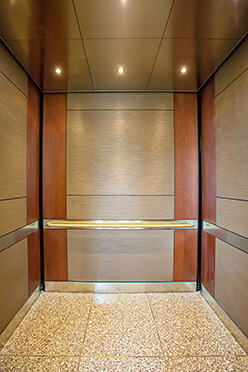
Epoxy Terrazzo Options for Elevators
When specifying epoxy terrazzo for elevator cabs, architects can decide whether to select a poured-in-place terrazzo or a precast terrazzo option.
Poured in Place Terrazzo for Elevators
Poured in place epoxy terrazzo offers a seamless appearance for elevator cabs. In comparison to precast terrazzo tile and panels, architects have more flexibility to create any design they prefer. Also, poured in place epoxy terrazzo offers a 3/8″ thickness, a thin, low-weight, and durable fit for these spaces.
To install this system, it is recommended to hire a professional installer to do the work. Concord Terrazzo Company can supply TERRAZZCO aggregates and epoxy resin needed to complete the installation in short lead times compared to a precast terrazzo option.
Precast Terrazzo for Elevators
Precast terrazzo panels and tiles are alternative options to the poured-in-place system. The benefit of precast terrazzo is its ease of installation. Unlike where seamless terrazzo is poured directly in place, panels and tile will require a 1/8″ setting material, increasing the overall thickness of the flooring system to 1/2″.
While it may take less time to install this system, expect longer lead times to acquire materials. Concord Terrazzo Company, Inc. supplies epoxy terrazzo material at a faster rate than developing a custom precast terrazzo product, which requires casting, cutting and polishing each panel or tile.
If a design is simplistic, panels and tiles are a great option to install quickly; however, do anticipate the presence of grout joints with these products. A poured-in-place terrazzo system is easy to maintain and will look great many years from now. On the other hand, grout joints can increase maintenance costs and poorly affect the overall appearance of the elevator floors.
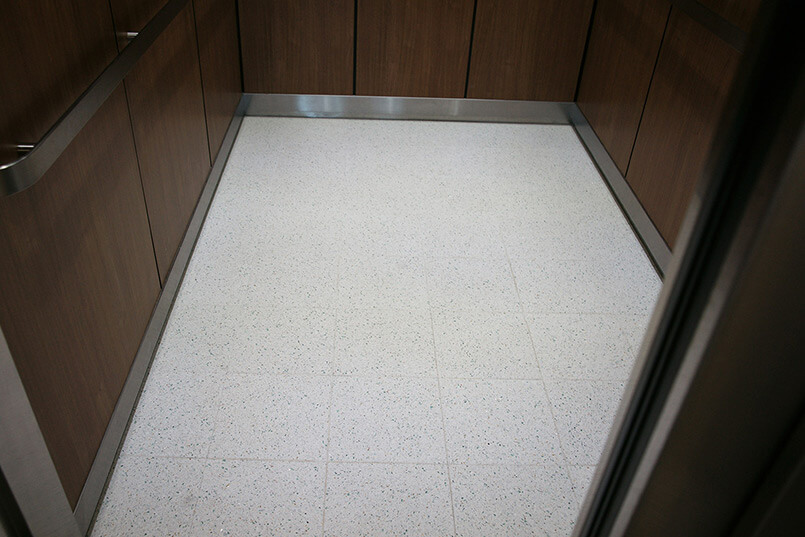
Elevator Flooring with Endless Design Possibilities
With poured-in-place epoxy terrazzo, architects and designers have the ability to create stylish elevator flooring that gives off a lasting impression for the building space.
Elevator cabs don’t have to look uninspired. Create a memorable experience with custom patterns and imagery in unique aggregate and color combinations.
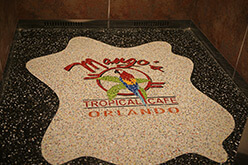
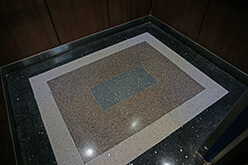
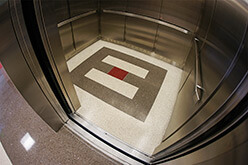
Installation Guidelines
When using epoxy terrazzo for elevator cabs, follow these installation instructions recommended by the National Terrazzo and Mosaic Association.
a) Epoxy terrazzo must be 3/8″ in thickness.
b) It is not recommended to use a coved vertical epoxy terrazzo base in cabs. If a straight base is considered, the installer must separate it from the surface using a flexible caulked joint.
c) Exterior grade plywood with 1 1/4″ thick tongue/groove board works best. Minimum is 3/4″ thick. The plywood should be attached to the metal steel deck of the cage. This requires not only a screw attachment but also an adhesive between the metal and the plywood.
d) Longer joints on the 8 ft. sides that butt adjacent sheets should be spaced 1/8″ to 1/4″ apart. For 4 ft. side, space should be 1/16″ to 1/8″.
e) Once the plywood is anchored, the surface must be sanded to remove foreign matter from the boards, opening up the pores of the wood.
f) Joints must be filled with epoxy and a 4-inch wide band of a liquid epoxy membrane (TERRAZZCO Flexible Membrane 528) and fiberglass mesh placed over each joint.
g) Depending on the size of the cab, angle divider strips can be positioned and anchored to the plywood with the epoxy material. The use of dividing strips are optional, as these strips are not necessary for this system.
h) After this is complete, an installer can complete the epoxy terrazzo floor in any color of choice.
i) Besides poured-in-place epoxy terrazzo, an alternative method is ordering precast terrazzo panels from a terrazzo manufacturer, which is finished offsite and delivered to the construction site to be installed with an epoxy thin-bed mortar.
LEARN ABOUT TERRAZZO
Need more information about terrazzo? Find out how why terrazzo is selected for its performance and aesthetics.
REQUEST SAMPLES
Start designing your elevator cab. The TERRAZZCO design team collaborates with you in building a custom design.
CONTACT US
Need consultation on which system is best for designing your elevator cab? Contact our representatives.







